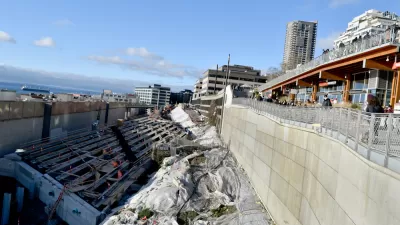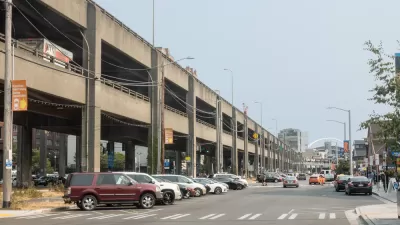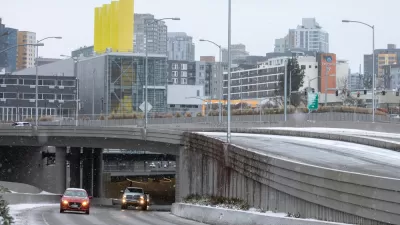There will be no road closures, no traffic bans, no loss of parking, and no new transit lines opening. Call it the "tolling effect" on Nov. 9 when motorists have to pay to drive through the two-mile State Route 99 tunnel that opened last February.

"Traffic inside the new SR 99 tunnel could see a big reduction when the tolls go into effect next month, state and city transportation leaders told the Seattle City Council on Monday," reports Kara Kostanich of KOMO News.
The Washington State Department of Transportation [WSDOT] says between 30% and 50% of the more than 80,00 drivers who use the tunnel daily could divert out of the tunnel when tolling starts on November 9.
WSDOT predicts drivers will use transit, work from home or find alternatives routes.
Five thousand cars travel through the tunnel every hour during during peak times. After tolling starts, that number is expected to drop to around 3,200 vehicles per hour [36% reduction].
Officials predict that after initial drop, traffic through the tunnel will creep back up over the next few months settling around 4,200 cars per hour [16% reduction].
Tolls, while 24/7 and bi-directional, are modest for the two-mile, four-lane tunnel (two lanes in each direction), ranging from $1.00 to $2.25, depending on the day, time and direction for those with a "Good To Go!" pass. Add $2 for "Pay-By Mail".
And the tolls are not punitive. As posted earlier, the state legislature determined in 2012 that tolling would be needed to raise $200 million of the $3.3 billion it cost for the Alaskan Way Viaduct Replacement Program (including $223 million from cost overruns due to "Bertha" tunneling woes) and cover ongoing operation and maintenance costs.
The tunnel opened to traffic on February 3.
Related in Planetizen:
-
New Marketing Campaign: Pushing People to Drive More in Seattle, January 27, 2019
-
Setting the Toll for New Seattle Tunnel, May 31, 2018
Hat tip to IBTTA Smart Brief.
FULL STORY: SR 99 tunnel traffic to take at least a 30% hit from tolling

Alabama: Trump Terminates Settlements for Black Communities Harmed By Raw Sewage
Trump deemed the landmark civil rights agreement “illegal DEI and environmental justice policy.”

Planetizen Federal Action Tracker
A weekly monitor of how Trump’s orders and actions are impacting planners and planning in America.

The 120 Year Old Tiny Home Villages That Sheltered San Francisco’s Earthquake Refugees
More than a century ago, San Francisco mobilized to house thousands of residents displaced by the 1906 earthquake. Could their strategy offer a model for the present?

In Both Crashes and Crime, Public Transportation is Far Safer than Driving
Contrary to popular assumptions, public transportation has far lower crash and crime rates than automobile travel. For safer communities, improve and encourage transit travel.

Report: Zoning Reforms Should Complement Nashville’s Ambitious Transit Plan
Without reform, restrictive zoning codes will limit the impact of the city’s planned transit expansion and could exclude some of the residents who depend on transit the most.

Judge Orders Release of Frozen IRA, IIJA Funding
The decision is a victory for environmental groups who charged that freezing funds for critical infrastructure and disaster response programs caused “real and irreparable harm” to communities.
Urban Design for Planners 1: Software Tools
This six-course series explores essential urban design concepts using open source software and equips planners with the tools they need to participate fully in the urban design process.
Planning for Universal Design
Learn the tools for implementing Universal Design in planning regulations.
Clanton & Associates, Inc.
Jessamine County Fiscal Court
Institute for Housing and Urban Development Studies (IHS)
City of Grandview
Harvard GSD Executive Education
Toledo-Lucas County Plan Commissions
Salt Lake City
NYU Wagner Graduate School of Public Service





























